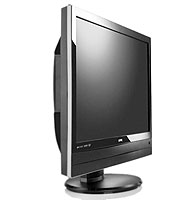Have you ever been faced with the dilemma of explaining or understanding how what you see on either a Television or computer screen gets there?


Have you ever been faced with the dilemma of explaining or understanding how what you see on either a Television or computer screen gets there?
There are many names or terms used to describe that screen. Some call it a "Monitor”, derived from the functional approach "to monitor”.
Some call the screen, the VDU (visual display unit), a name that is likely to have influenced the naming of yet another important system the "Video”.
The computer screen and the TV screen are so related that they could almost perform the same functions.
With modern models, they come with all the features of performing duo tasks (TVs as well as computer displays), this common with many Samsung models. We now have two classes to choose from i.e. the bulky glassy type known as Cathode Ray Tube or simply put as "CRT” and the Liquid Crystal Display commonly known as LCD.
Many people normally misrepresent the latter by calling it "Flat Monitor”; yes it is flat, but that is not enough, even some of the modern CRTs are flat, take an example of Sony’s WEGA TV sets, they are both CRT and Flat.
By the way, all LCDs are flat but CRTs are either curved or flat.
The difference is quite profound in that, the flat ones have all corners of the screen lying at 180 degrees with each other whereas the curved ones have the centre protruding outwards in a dome shape.
CRTs have a unique tube shape, they comprise of an electron gun. The electron gun sends electrons towards the front through a vacuum which exists in the tube of the monitor.
The gun is what is known as a cathode ray tube, the electrons fired forward are known as Cathode Rays.
These rays correspond to the red, green and blue channels of the display and VDU interface.
At the neck of the funnel-shaped monitor is an anode, which is magnetised according to signals sent by the display controller.
As electrons pass the anode, they are attracted to one direction or the other depending on how magnetic the anode is at that time.
This moves the electrons towards the correct part of the screen. The signal is decoded by the display controller, which handles the internal components of the monitor, this acts as a subsystem for the display.
You may have noticed that when a magnet is moved closer to the Screen (when it is turned on), colours begin to move according to the magnet.
This is the exact behaviour that occurs when signals arrive, the difference is that when you move a magnet past, this is uncoordinated signal (may be harmful to the screen); likewise, when the electrons move the ions move accordingly, the difference is that, this makes sense as the signal is coordinated and makes sense to the viewer.
On the other hand, the LCD (liquid Crystal Displays) were invented much late than their CRT counterparts.
A number of circumstances led to their genesis; viz the invention of the "Portable” computers, miniature displays, digital clocks, microwave ovens etc.
The biggest advantage they have over the CRTs is most probably; they are thinner, lighter and consume much less power.
The LCDs tend to have an ambiguous contradiction in as far as matter is concerned.
Matter is solid, liquid or gas, how come we are talking of crystals being liquid?
I am not going to over emphasize on the behaviour of the liquids vis avis those of solids and gases; in this case, molecules of solids have a definite shape, those of liquids can change and move around within the liquid.
However, there are some substances that have both
behaviours (like solids and liquids), this is the trend for liquid crystals.
It takes a fair amount of heat to change a suitable substance from a solid into a liquid crystal, and it only takes a little more heat to turn that same liquid crystal into a real liquid.
This explains why liquid crystals are very sensitive to temperature and why they are used to make thermometers, laptop computer displays etc.
That is why Laptop screens behave in a funny manner when one touches’ them. (to be continued)


